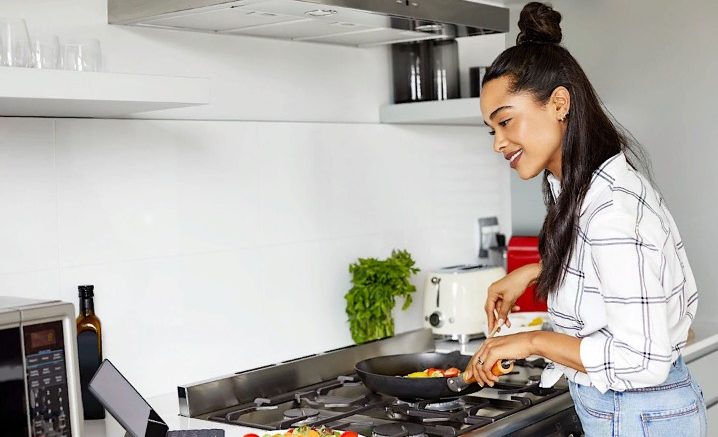The advantages of using a nonstick pan are simple: Chef Joshua Lanning states, “[They] allow you to prepare highly stick-able items without fail.” (Think fish and eggs.)
If you take care of your nonstick pan, whether it costs $30 or $100, it should last at least a year, according to Lanning.
“You did a terrific job if you got two years out of a nonstick,” he says. However, there is one common mistake that consumers do that drastically reduces the longevity of their nonstick pans: using them on high heat.
Food does not stick to nonstick pans because they are coated with a unique coating. “Under a microscope, a metal pan will reveal a plethora of little pits and crevices. When metal expands when heated, the holes and crevices close up “Lanning explains.
“When food comes into contact with metal as it expands, the metal acts as a vice, biting down on the food and effectively adhering it to the metal. To prevent this, a coating is applied to pre-fill the holes and crevices, making the surface extremely smooth.”
He explains that the plastic coating is comprised of a gas that is frozen and compacted into a waxy substance and that at high temperatures, it will flake and break down.
“When you think that a nonstick surface was previously created of gas and then processed into a waxy coating,” he says, “it seems obvious that if it is mishandled, it will revert to gas and begin to disintegrate like a candle.”
Not to add that the molecules on the coating break down and emit fluorocarbons into the air when heated over 400–500 degrees “According to Lanning.
Inhaling these polymers, which are widespread in household products, has been related to respiratory sickness, which is why overheating nonstick cookware is so dangerous.
To avoid this (and extend the life of your cookware), Lanning suggests using a nonstick pan for things like eggs and vegetables that require medium or moderate heat, and a stainless steel pan for things that require high heat.
Another factor that can prematurely degrade your nonstick pan is how you clean it. If at all feasible, Lanning recommends wiping it out with a paper towel.
Scrub lightly with anything non-abrasive if you’re using soap. Nonstick pans should never be used with metal since they will scratch and destroy the coating.
Finally, he recommends storing your nonstick pan with a clean towel inside so that the nonstick coating is protected when another pan or kitchen item is placed on top of it.
In conclusion: “Nonstick pans are fantastic instruments,” says Lanning. “You can’t cook everything in them, but if you want a French omelet to equal Jacque Pepin’s, break out the nonstick.”


